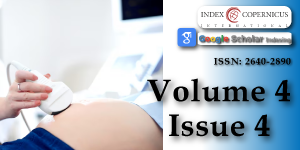Prediction of neonatal and maternal index based on development and population indicators: a global ecological study
Main Article Content
Abstract
Introduction: Although worldwide maternal and neonatal mortalities have decreased, but Achieving sustainable development goals remains an unfinished agenda and global challenge. This study aimed to predict neonatal and maternal index based on development and demographic indicators.
Methods: In this ecologic study, the dependent variables were Maternal mortality ratio (MMR), Neonatal mortality rate (NMR), and Under 5 Mortality Rate (U5MR) and the independent variables were Gender gap index (GGI) and its four components, human development, life expectancy, total fertility rate, and population growth. Data conducted using international secondary data published data bases of health metrics from 2016 to 2018 in 149 countries from WHO (World Health Organization), World Economic Forum, UNICEF (United Nations Children's Fund), and UNDP (United Nations Development Programme). Data analysis was performed using correlation model in Stata version 14.1 software.
Results: In this study, economic participation and total fertility rate are positively and educational attainment, Human Capital Index and life expectancy are negatively associated with MMR. Human Capital Index, Educational attainment, and Life expectancy are negatively associated with NMR. Economic participation and total fertility rate are positively and educational attainment, Human Capital Index and life expectancy are negatively associated with U5MR.
Conclusion: To reduce the maternal and neonatal mortality rate, it is important to pay attention to indirect causes such as equal conditions for men and women to demographic and population indices such as economic participation, educational attainment, Human Capital Index and life expectancy
Article Details
Copyright (c) 2021 Abdollahpour S, et al.

This work is licensed under a Creative Commons Attribution 4.0 International License.
WHO. World Health Organozation. Global Health Observatory (GHO) data. Infant mortality. Situation and trends. 2017. https://www.who.int/gho/child_health/mortality/neonatal_infant_text/en/
WHO. Maternal mortality fact sheet No. 348. Geneva: World Health Organization; 2014 (http://apps.who.int/iris/bitstream/10665/112318/1/WHO_RHR_14.06_eng.pdf?ua=1
WHO. World Health Organozation. Global Health Observatory (GHO) data. Neonatal mortality. Situation and trends. 2016. https://www.who.int/gho/child_health/mortality/neonatal_text/en/
WHO. Strategies towards ending preventable maternal mortality (EPMM), World Health Organization. 2015.
WHO. Evaluating the quality of care for severe pregnancy complications: the WHO near-miss approach for maternal health. 2011.
Abdollahpour S HMH, Khadivzadeh T. The global prevalence of maternal near miss: a systematic review and metaanalysis. Health Promot Perspect. 2019; 9: 255-262. PubMed: https://pubmed.ncbi.nlm.nih.gov/31777704/
Hulton L, Murray S, Thomas D. The Evidence Towards MDG 5. London, England. 2010.
Economic UNDo. The Millennium Development Goals Report 2008. United Nations Publications; 2008.
Rath S, Patnala S, Bosman SJ. Sustainable Development Goals and Addressing Non-communicable Diseases. Indian J Pharm Pract. 2016; 9: 67.
WHO. World Health Organozation. Global Health Observatory (GHO) data. Under-five mortality. Situation and trends. 2018. https://www.who.int/gho/child_health/mortality/mortality_under_five_text/en
Souza JP, Tunçalp Ö, Vogel J, Bohren M, Widmer M, et al. Obstetric transition: the pathway towards ending preventable maternal deaths. BJOG. 2014; 121: 1-4. PubMed: https://pubmed.ncbi.nlm.nih.gov/24641529/
Alvarez JL, Gil R, Hernández V, Gil A. Factors associated with maternal mortality in Sub-Saharan Africa: an ecological study. BMC Public Health. 2009; 9: 462. PubMed: https://pubmed.ncbi.nlm.nih.gov/20003411/
Girum T, Wasie A. Correlates of maternal mortality in developing countries: an ecological study in 82 countries. Matern Health Neonatol Perinatol. 2017; 3: 19. PubMed: https://pubmed.ncbi.nlm.nih.gov/29142757/
Say L, Chou D, Gemmill A, Tunçalp O, Moller AB, et al. Global causes of maternal death: a WHO systematic analysis. Lancet Glob Health. 2014; 2: e323-e333. PubMed: https://pubmed.ncbi.nlm.nih.gov/25103301/
Forum WE. The Global Gender Gap Report 2018. https://www.weforum.org/reports/the-global-gender-gap-report-2018
Nations U. Department of Economic and Social Affairs, Population Division, World Population Prospects: The 2017 Revision. 2017.
UNFPA. Global data - Monitoring ICPD Goals: selected indicators. 2016. (https://www.unfpa.org/sites/default/files/SWOP-2016.xlsx)
UNICEF. Child Mortality Estimates: Country-specific neonatal mortality rate. Estimates generated by the UN Inter-agency Group for Child Mortality Estimation (UN IGME) in 2017. http://data.unicef.org
Tajik P, Nedjat S, Afshar NE, Changizi N, Yazdizadeh B, et al. Inequality in maternal mortality in Iran: an ecologic study. Int J Prev Med. 2012; 3: 116. PubMed: https://pubmed.ncbi.nlm.nih.gov/22347608/
Kazemi Karyani A, Kazemi Z, Shaahmadi F. The main determinants of Under 5 Mortality Rate (U5MR) in OECD countries: A cross-sectional study. Int J Pediatr. 2015; 3: 421-427.
Almasi-Hashiani A, Sepidarkish M, Vesali S. The correlation of human development index on fertility and mortality rate: a global ecological study. Int J Pediatr. 2016; 4: 4071-4080.
Abdollahpour S, Heidarian Miri H, Khamse FK, Khadivzadeh T. The relationship between global gender equality with maternal and neonatal health indicators: an ecological study. J Matern Fetal Neonatal Med. 2020; 14: 1-7. PubMed: https://pubmed.ncbi.nlm.nih.gov/32290738/

